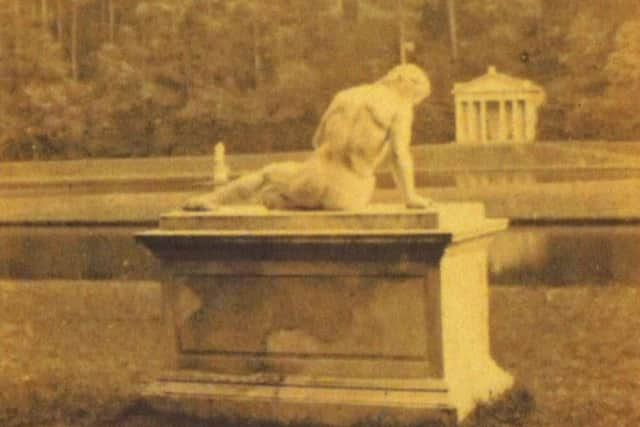Georgian statue returns to Fountains Abbey grounds over 100 years after mysteriously vanishing


The Dying Gladiator stood alongside a moon pond in Studley Royal Water Garden until it mysteriously vanished in the late 19th century.
It was part of a collection of statues that were on display in the gardens during their Georgian heyday - they were landscaped by the Aislabie family, who owned the Studley Royal estate, from 1718.
Advertisement
Hide AdAdvertisement
Hide Ad

National Trust historians believe the statue could have fallen into disrepair or been removed when it fell out of fashion.
Now, the charity - which has managed the parkland since 1983 - has raised over £83,000 from local well-wishers to commission an authentic replica of the original.
The cast has been returned to the spot where it first stood as part of a programme to restore the gardens to their 18th-century glory.
Advertisement
Hide AdAdvertisement
Hide AdIt is now alongside other figures including Neptune, Bacchus and the Wrestlers, which also occupy plinths beside the moon ponds in the grounds of the UNESCO World Heritage Site.


A team of expert conservators worked on the project.
Site co-ordinator Sarah France said:-
"Since working as World Heritage co-ordinator at Fountains Abbey and Studley Royal I’ve been fascinated by the collection of lead and stone statues in the water gardens. These statues portraying classical figures are often overlooked today but in the 18th century visitors would have recognised the figures and been intrigued by their ‘hidden’ political meanings.


"In 2016 we reinstated the white finish to the existing lead statues and inspired by that work we started to think about returning the ‘missing’ statues. We have no idea why the Dying Gladiator statue disappeared in the late 19th century, but after detailed research and working closely with experts in lead statuary we were sure we could make a replica of the missing statue that would enhance the exceptional beauty of the gardens.
Advertisement
Hide AdAdvertisement
Hide Ad"We would like to thank everyone who has generously donated, including a number of private individuals, local charitable trusts as well the local community and our visitors. The appeal has shown us that people care as passionately about the gardens at Studley Royal as much as we do, and we are really grateful for everyone’s support.’
Archaeological surveys took place to determine the exact location of the original statue.
The fate of the original is still unknown despite extensive research.